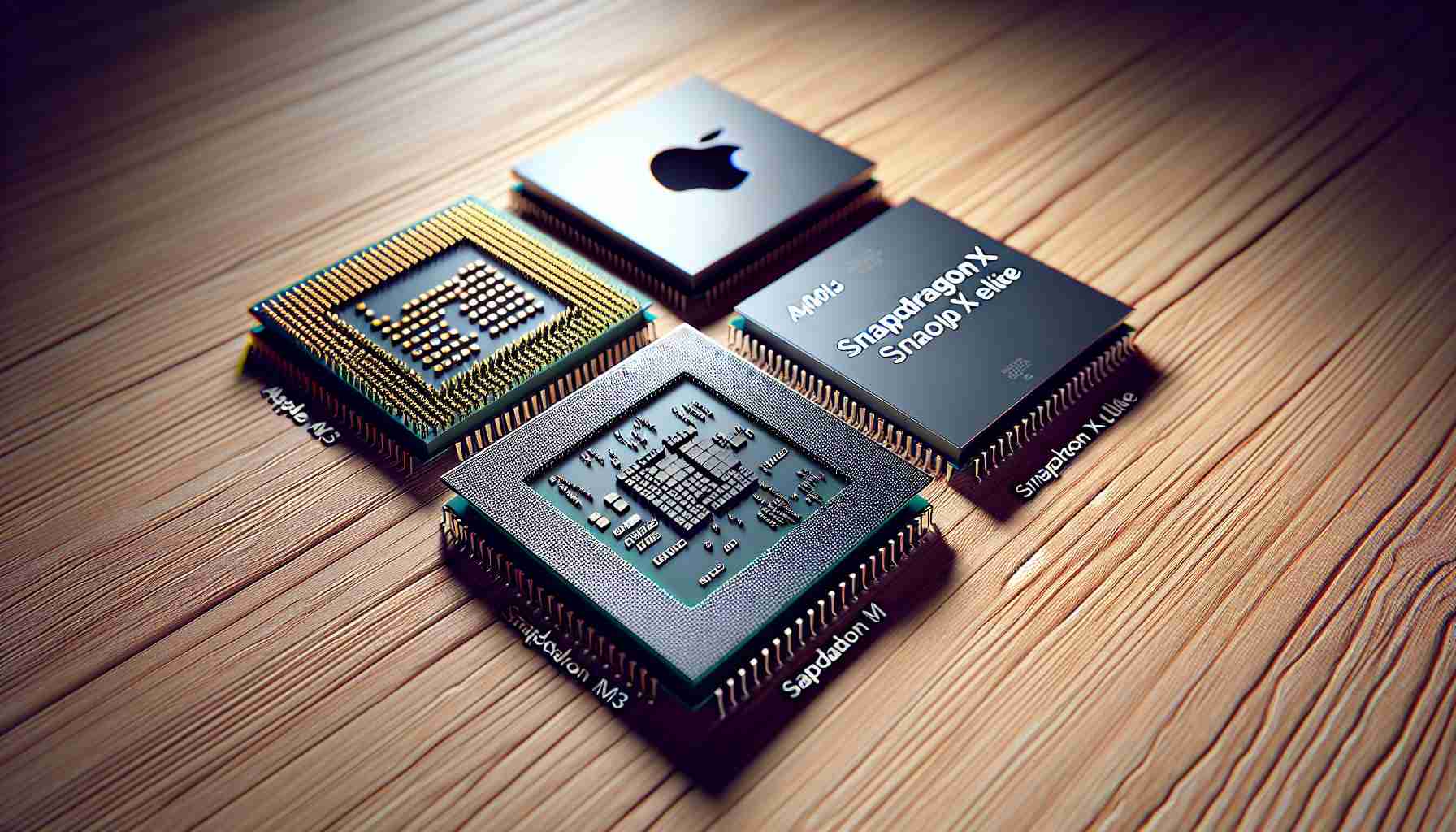Comparing Performance of Apple M3 and Snapdragon X Elite Processors
The battle between the Apple M3 and Snapdragon X Elite processors for laptops has sparked a new wave of interest in ARM technology. While both processors excel in energy efficiency and office tasks adapted for ARM architecture, there are notable differences in their power capabilities.
Power for Artificial Intelligence
In terms of AI processing power, the Snapdragon X Elite outshines the Apple M3 with its 45 TOPS compared to Apple’s 18 TOPS. However, Apple’s forthcoming Apple Intelligence features may bridge this gap, offering a competitive edge in practical usage despite the Snapdragon’s raw processing power.
General Task Performance
The Apple M3 boasts superior single-core performance, while the Snapdragon X Elite shines in multi-core tasks, as revealed by benchmarks from nanoreview.net. With the Snapdragon reaching a higher frequency of 4.0 GHz compared to Apple’s 3.7 GHz, it holds a slight performance advantage.
Energy Efficiency
While a Signal65 test showed the Surface Laptop 6 outlasting the MacBook Air M3 in battery life by 10%, the overall efficiency ratings for both processors are comparable. Regardless of the slight differences, devices equipped with either chip offer impressive battery life compared to x64 options.
Integrated GPU Performance
Both processors feature integrated GPUs, crucial for tasks like video editing. The Snapdragon X Elite edges out the Apple M3 with 12% higher GPU performance, achieving 4.6 TFLOPS versus Apple’s 4.1 TFLOPS, enhancing graphics-related applications.
Ecosystem Impact
Beyond performance metrics, the ecosystem plays a pivotal role. Apple’s tight integration of hardware and software offers a streamlined user experience, whereas Snapdragon X Elite is exclusive to Windows devices. Apple’s optimization prowess across its devices further underscores the ecosystem’s significance beyond sheer processor power.
New Facts and Insights on Apple M3 and Snapdragon X Elite Processors
As the competition between the Apple M3 and Snapdragon X Elite processors intensifies in the realm of ARM-based technology, additional key differences and nuances emerge to shape the narrative of their performance capabilities.
Comparison in Gaming Performance
One aspect that sets these processors apart is their gaming performance. The Snapdragon X Elite processor showcases superior gaming capabilities due to its Adreno GPU, which is optimized for mobile gaming experiences. On the other hand, the Apple M3, while proficient in general graphics tasks, may lag behind in handling high-demand gaming applications.
Thermal Management Challenges
A crucial consideration that affects long-term performance is thermal management. The Snapdragon X Elite processor has been noted for its efficient thermal control mechanisms, which allow sustained peak performance over extended periods. In contrast, the Apple M3 may face challenges in maintaining optimal performance levels under intense workloads due to potential thermal limitations.
Customization and Upgradability
Another factor to ponder is the scope for customization and upgradability. While Apple’s closed ecosystem limits user access to hardware modifications, Snapdragon X Elite processors offer more flexibility for customization and upgrading components, catering to tech enthusiasts and power users seeking personalized computing experiences.
Advantages and Disadvantages
Advantages: The Apple M3 excels in single-core tasks and benefits from Apple’s ecosystem integration, providing a seamless user experience. In contrast, the Snapdragon X Elite impresses with its multi-core performance, gaming capabilities, and potential for customization.
Disadvantages: Despite its AI processing power, the Snapdragon X Elite may lack the refined integration and optimization seen in Apple’s devices, impacting overall user experience. The closed nature of Apple’s ecosystem could also limit compatibility and customization options for users.
Key Questions and Controversies
1. Which processor is better suited for gaming applications?
The Snapdragon X Elite’s Adreno GPU offers significant advantages in gaming performance. However, the Apple M3’s strengths in general tasks may appeal to a broader user base.
2. How do thermal management issues affect long-term performance?
Understanding how each processor handles thermal constraints is crucial for assessing sustained performance levels, especially during intensive workloads or gaming sessions.
3. What impact does customization potential have on user experience?
The degree of customization and upgradability can influence user satisfaction, particularly for individuals seeking personalized computing solutions tailored to their specific needs.
For further insights on ARM processors and technological advancements, visit the main domain of AnandTech.
















